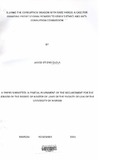| dc.description.abstract | The study begins by acknowledging that corruption is not a new phenomenon in Kenya. As early as 1956, The Colonial Administration saw it fit to put in place a legislative framework for fighting corruption through the enactment of the Prevention of Corruption Ordinance. The 1963 Independence Constitution continued this trend by creating a powerful office of the Attorney General (AG) who by dint of Section 26 thereof was empowered to exercise near exclusive powers of prosecution on behalf of the State. The AG's office is stated in the Constitution to be an office in the public service and as such the holder is expected at all times to act in the public interest.
In this regard, Section 26(6) of the Constitution granted and guaranteed the holder of the office independence in the discharge of hislher duties. However, notwithstanding such express declaration of independence by the Constitution, available evidence indicates that it has virtually been impossible for the AG to independently commence and complete prosecutions against individuals who are part of the government and/or who enjoy the protection of powerful people in government. Nowhere is the lack of independence and failure to act in the public interest more manifest and evident than the area of prosecution for corruption and economic crimes.
Since independence in 1963, Kenya has experienced some of the most high profile, international corruption scandals in the region. These include the Goldenberg and the Anglo Leasing Finance scandals. In late 2002, the newly elected NARC government took office on anti-corruption platform and proceeded to enact the Anti- Corruption and Economic Crimes Act, No.3 of 2003. The Act established the Kenya Anti- Corruption Commission (KACC) with a statutory mandate of fighting corruption and economic crimes. The structure of KACC assumes a three-pronged strategy based on investigation, public education, prevention and advisory services, and civil recovery and restitution. Since its establishment however, KACC's ability to deter and combat corruption has been weak.
This study attributes this weakness to the fact that the Commission does not have prosecutorial powers on its own and can only recommend cases to the AG for prosecution. While there are a number of variables that could play a role in explaining the perceived failures, this study finds that the absence of a specialized, in-house prosecution unit and the lack of inter-agency co-operation and coordination between the Commission and the AG's office is arguably one of them. Comparing KACC to Nigeria's Economic and Financial Crimes Commission (EFCC) which is endowed with prosecutorial powers, the study notes that while Nigeria faces even higher levels of corruption than in Kenya, the EFCC has largely managed to execute its mandate effectively and efficiently. The underpinning argument advanced in this study therefore identifies law enforcement and prosecutorial functions as a factor in achieving this success.
KEYWORDS:
Corruption; Prosecution; Anti- Corruption Commissions; Attorney General; Kenya | en_US |

